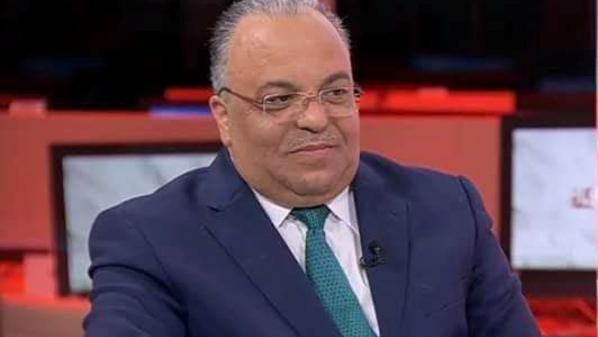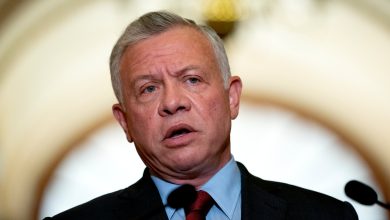
By : Dr. Monther Howarat
Jordan Daily – As the third round of U.S.-Iran talks convenes under Omani mediation, signs suggest tangible progress is underway. The discussions have reportedly moved from political and security concerns to technical details—a clear indication that both parties are seriously exploring a negotiated outcome. This marks a notable shift in Tehran’s posture, particularly when viewed against the backdrop of decades-long hostility toward what Iran has long termed the “Great Satan.”
Historically, Iran’s revolutionary doctrine allowed little room for compromise with the United States. The regime’s ideological infrastructure mobilized militias across Arab lands to confront American influence—rhetorically and militarily. From Lebanon to Iraq, Iran’s proxies waged battles under the pretext of resisting imperialism, cementing Tehran’s image as the vanguard of anti-Americanism in the region.
However, the landscape changed dramatically following the outbreak of the aggression on Gaza, known as the “Al-Aqsa Flood.” Iran recalibrated its regional strategy, abandoning its pursuit of a direct confrontation with U.S. interests in the Middle East. The presence of U.S. naval forces in the Mediterranean served as a stark reminder of American military dominance, prompting Tehran to reconsider its capabilities and the true cost of escalation.
The return of Donald Trump, armed with a renewed commitment to “maximum pressure” and a hardened stance known as “maximum threat,” intensified the stakes. Economic devastation in Iran—brought on by crippling sanctions—left the regime facing a binary choice: either engage in meaningful negotiations or risk a direct military confrontation. Tehran’s leadership, recognizing the severity of the moment, opted for pragmatism.
Advisors close to Supreme Leader Ali Khamenei, including the heads of Iran’s three main branches of power, reportedly urged him to return to what he once called “heroic flexibility”—a doctrine he had reluctantly endorsed in 2013. This internal push was bolstered by revelations about the extent of Israeli military reach, particularly in Lebanon, where intelligence suggested Israel could strike Iranian nuclear facilities at Fordow and Natanz with similar precision. These developments underscored the fragility of Iran’s strategic depth and the urgency of reassessing its course.
In a remarkable about-face, Khamenei—who months earlier had dismissed the U.S. as “neither wise nor honest”—signaled a willingness to re-enter serious talks. For the first time, discussions may extend beyond the nuclear file to include Iran’s missile program. A broader economic arrangement could also be on the table, with reports suggesting that a prospective deal might include U.S. investment in Iran worth up to $1 trillion.
This turn of events raises a profound and uncomfortable question: Why did Iran not pursue diplomacy earlier—before its regional ventures sowed destruction across Arab capitals? When its proxies were most active, when slogans about regional “liberation” were loudest, diplomacy was off the table. Now, faced with existential threats, Iran has abandoned its revolutionary commitments and pivoted toward self-preservation.
Tehran’s retreat has left its Arab allies in the lurch. In Lebanon, Syria, and Palestine, Iran’s partners find themselves increasingly isolated, having served as pawns in a geopolitical game that Iran itself is now exiting. The use of Shiite identity and the Palestinian cause as ideological cover has been exposed. When it came time to defend its own interests, Iran chose diplomacy over martyrdom.
The past decades of Iranian regional policy can best be described as strategic recklessness. It devastated Arab societies in pursuit of a vision that, in hindsight, appears primarily aimed at restoring Iran’s access to global markets and positioning it favorably in Washington’s geopolitical calculus. Tehran always knew the allure of its geography; U.S. strategists never stopped seeing Iran as too valuable to lose.
With tensions escalating globally—particularly amid U.S.-China rivalry—Iran has come to understand that Washington’s threats are not idle. If concessions are not made, regime survival itself may be at stake.
Today, Iran is not only negotiating with the United States but may be preparing for a broader diplomatic reentry, possibly including normalization with Israel. If such a deal materializes, it would echo the Camp David Accords—not in content, but in political symbolism. The stark difference, however, is this: Egypt under Sadat fought for its own sovereignty, while Iran spent decades dismantling neighboring nations for a project it is now quietly abandoning.
In the end, Iran’s strategic gamble has collapsed under the weight of its contradictions. The regime is retreating—not because of ideological evolution, but because of hard power realities. Yet some still cheer this project, blind to the cost it imposed on the region. Meanwhile, its architects are already making their exit—leaving behind rubble, resentment, and the bitter truth that their grand design was neither heroic nor strategic, but deeply, tragically flawed.

